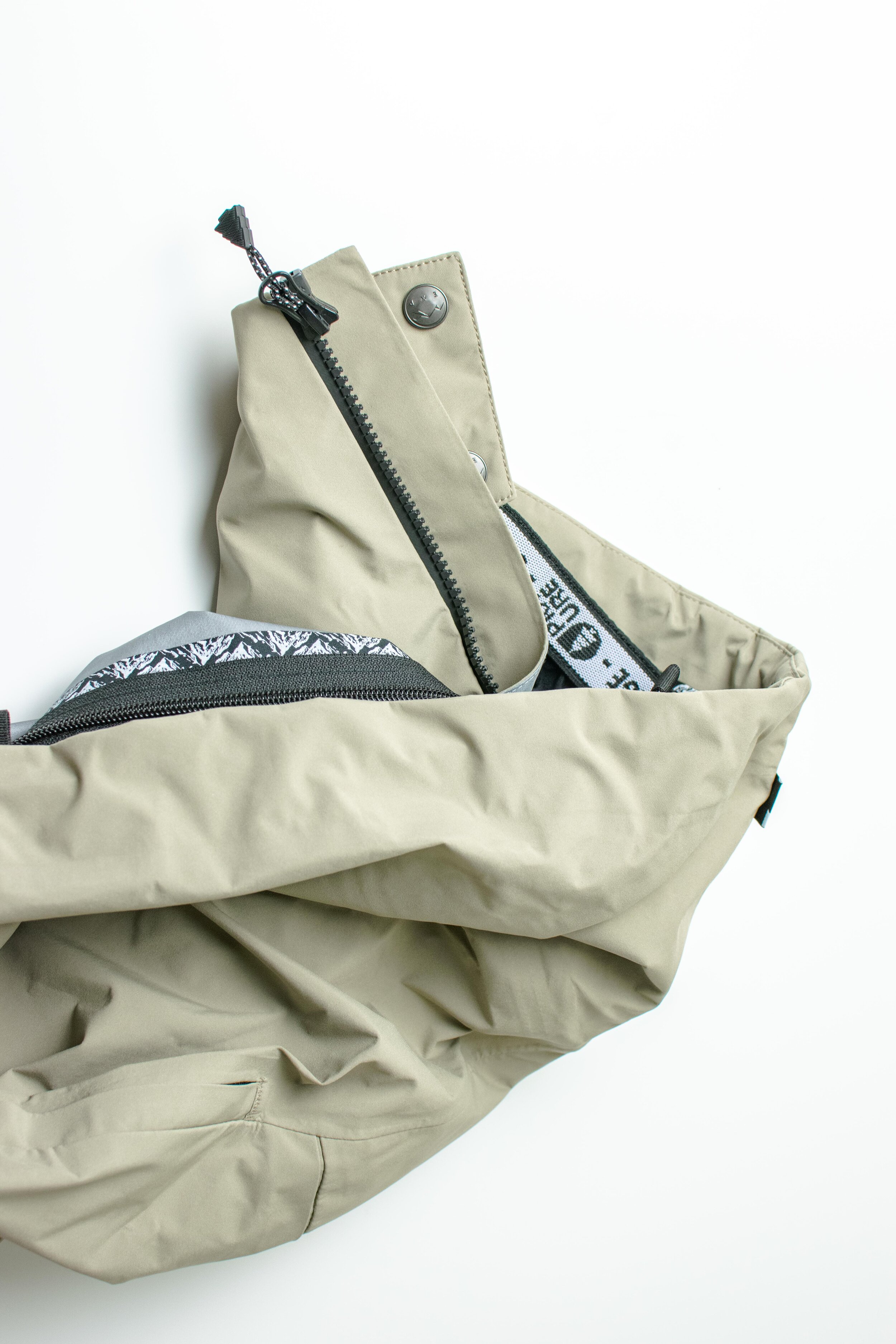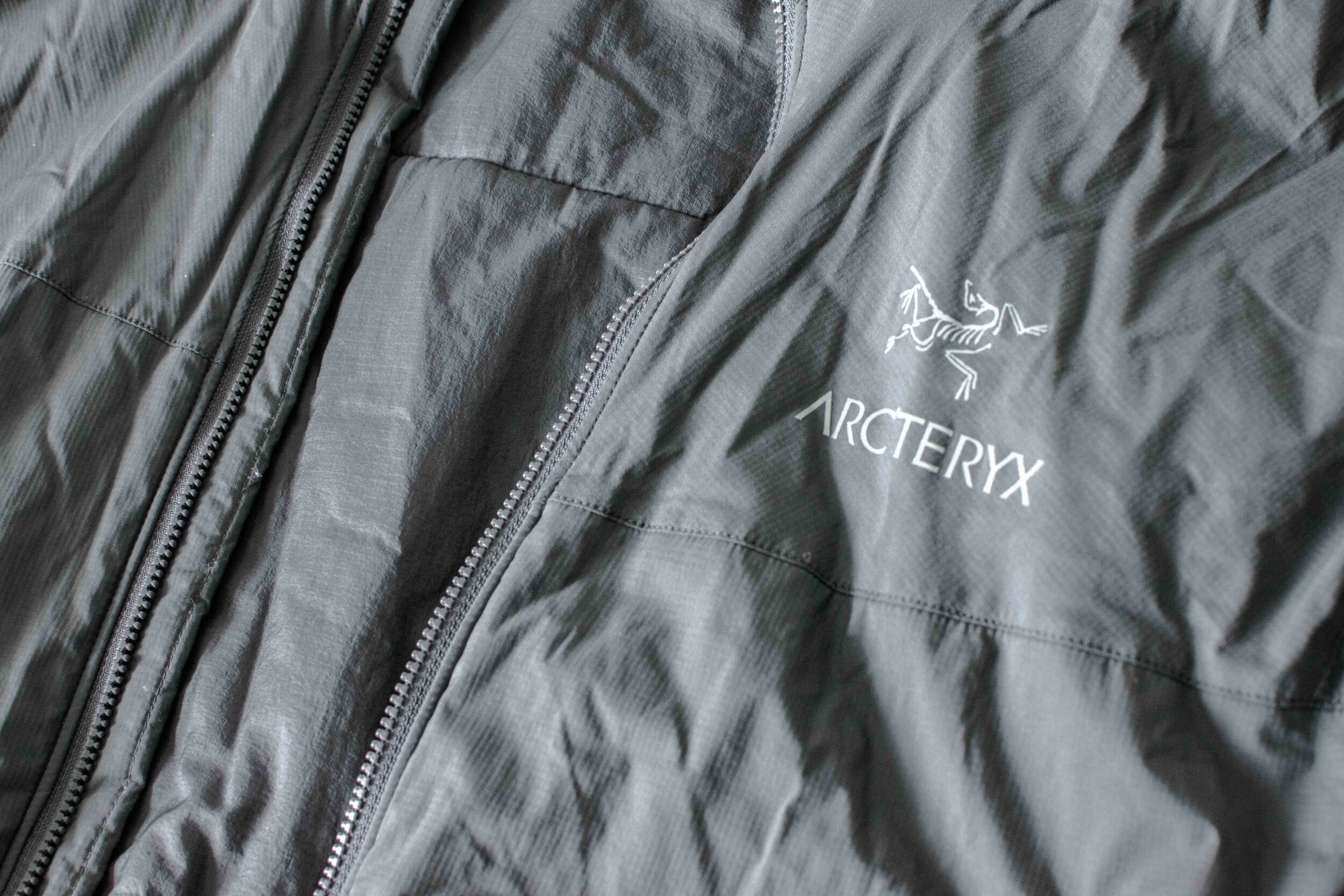Picture Organic Demain Jacket (2021)
Picture Organic Clothing Demain Jacket (2021)
That just means it wasn’t grown with GMOs.
Picture Organic Clothing Demain Jacket (2020)
Type: Shell / Use: Active / Face: Polyester / Insulation: n/a
Technologies: Bio-sourced polyester hardshell, XPORE sustainable membrane
Price: $499.99
Outdoors activities mean a complicated relationship with the environment.
By definition, outdoorsy people care a lot about the outdoors. But the actions they take there - let alone the equipment they need to do them - asks more from nature than the alternative.
Is this paradoxical? In a world of absolutes, maybe. But on the real Terra, harmony with Mother Earth seems to preclude innocence. Tramping down fresh trails, coating gear in chemicals: these are the tithes to worship Gaia. Some of history’s most ardent conservationists were hunters. And today, the inheritors of their contradiction are technical apparel brands.
Outdoors clothing, broadly, relies on a lot of earth-unfriendly components to work. Polyester fleece, ePTFE, and DWR are pollutants. The outdoors industry, to its credit, has tried to innovate around these - and it has made progress. However, some humps just seem uncrossable. Chief among them: breathable waterproof membranes. In their traditional form, these will never decompose. Ever.
Picture Organic Clothing, a French ski brand, thinks it’s found a new line.
The brand’s Demain jacket is a sustainable hardshell that checks every “responsible” box. There’s recycled components, a low-impact DWR, and a hangtag that boasts about the company’s B Corp status. Is the Demain worthy of its label as a jacket for demain? Well, let’s start with the tech.
The big story on the Demain is its combination of a bio-sourced face fabric with a recycled membrane. The polyester that covers the Demain is a blend between 42% virgin poly and 58% sugarcane waste. A byproduct of sugar processing, cane waste is typically just that: waste. Here, it’s ingeniously upcycled into polyester by a fermentation process that sees it made into bio-ethanol, then spun into yarns. Typical polyester is made from petroleum; bio-poly is made from biofuel. It’s simple. It’s smart.
That bio-sourced poly is knitted rather than woven using something the brand calls “Hybrid Multi-Density Proknit.” This tech lets Picture vary the density of yarns at any point on the jacket, providing looser (and more breathable) knits in places that could use more venting. Knitting also makes the jacket a bit more agile - but more on that later.
Underneath all this is an eco-friendlier membrane, BenQ’s XPORE Eco. The company claims XPORE is the first solvent-free, PFC-free breathable waterproofing on the market. Unlike most modern ePTFE membranes, the micropores in XPORE are made via mechanical stretching (think: pulling taffy apart) instead of the use of chemical solvents. The resulting membrane is just as effective as the conventional ePTFE membrane, rating at 25,000mm/day waterproofing and 20,000g/m2 breathability. For bonus planet points, it’s made from recycled plastic.
Functionally, this means it works and wears like a standard waterproof jacket. It’s crinkly. It’s rigid. It feels vaguely like Ripley’s Loader. The Multi-Density Proknit does add a surprising degree of nimbleness not found on other big bomber jackets, but it’s still an almost 2lb (1lb 11.5oz/780g) jacket.
For that tonnage, you get a performance in rain and snow is on-pair with other capital-H Hardshells. 25K/20K is no joke. Whatever’s outside will stay outside. At the margins, the Demain is a tad more breathable than GORE-TEX Pro jackets like the Tilak Raptor MiG, MHW Exposure/2, or Arc’teryx Alpha SV. But it’s much, much less airy than the TNF L5 LT, its direct neighbor in price.
Wearing the Demain around a New York winter, I found it soldily comparable to Haglofs’ Nengal 3L PROOF. Which makes sense because, ya know, they’re both big ski shells.
Yes! Skiing! That old battleaxe. If Picture’s website didn’t tip you to it, the feature set will. The Demain is ski/snowboard kit from its genes. Most of the hardware on the jacket is geared towards powder. There are elastic wrist gaiters (overrated), an elastic stash pocket (underrated), and a removable snow skirt (rated, but like, in the way cool British teens say it). There are also pit zips for dumping excess heat after a hard run.
Outside of the fact that the snow skirt is removable - how is this not the default yet? - the features I liked most on the Demain were the banal ones. For example, there are slash pockets so your hands have something to do. Also: generally, zippers and cinches work nicely. I especially liked the hem pulls. They just worked.
That said, there are some real misses here.
For one, there’s no double zip. I’ll save the dissertation about trade-offs around a potential gain to durability and weight savings for athletes. The truth of it is that people like double zips. Your humble Coatchecker (a proud people) is just one of them. I’ve seen other extreme hardshells, even other extreme skiing hardshells, make a double zip work. Brands: just add one already!
The other miss for me on function was the flap/zip system on the pit zips. I understand the thought behind using fabric overlays: when zippers other than PU-coated coil zips are used on waterproof jackets, the zippers can’t reliably be trusted to keep water out over extended periods. Therefore, a bit of the waterproof outer draped over the zipper helps cover.
That’s fine in theory. But in practice, it means zippers getting caught on fabric flaps. And on the Demain, where some of those flap-zips are operated out of direct sight, it makes working them downright frustrating. Long story short, my pit zips are still open and likely to stay that way.
As a palette cleanser, the branded trim features are a nice touch, especially the dazzle-print seam tape. That’s some Snow Peak shit right there. I wish more brands had the courage to do it.
Speaking of style points: let’s talk style.
As an impartial observation, there’s just not much to say about the aesthetics of the Demain. It’s a conventional-looking jacket that could use another styling pass to take it past the gondola, but that’s much of the ski category in a nutshell.
The “Stone” colorway shown here has a nice sheen to it. The bio-based face fabric has a sort of vintage coly/potton look, which makes working it into dailywear a bit easier. I didn’t love the contrast features on the chest nor the printed logo graphics. I did love the contrast abrasion-resistant strip on the back of the hood. It gave the jacket a subdermal, Altered Carbon-esque vibe. I hope we see other brands follow in using this space for more than just a logo. Nice one, Picture.
Fit-wise, a size Medium worked surprisingly great on my 6’4”, 180lb frame. The Demain (très français) was slim without being constrictive, and the slight stretch in the face prevents the dreaded “five pound bag” phenomenon.
Sadly, the tech story, performance creds, and flattering fit weren’t enough to overcome how the Demain wore casually. The logos and visual cues made it come across aggressively “ski bro,” at least in the shoes of this New Yorker. Even throwing it on for walks in the snow, I felt out of character. Not because I wasn’t wearing it with Vans slip-ons, a Patagonia fleece, and a beanie. Because I didn’t have last season’s lift ticket dangling off a pocket.
Overall, the Demain is a legitimately cool sustainability story that packs novel technology and solid performance. It’s a 25K/20K shell made from sugarcane and a better-for-Earth membrane. That’s nothing to get down about. However, given its core outdoors styling and graphics package, the jacket felt like a chairlift too far for me during testing.
If you’re a skier looking for a high-function shell that can double for small talk on the way up, the Demain is your shell. Materials-wise, the Demain might really be the jacket of tomorrow. Aesthetically, it’s not exactly future perfect.
Overall: The future is crinkly, but unevenly trimmed. 7.2/10.
Style: ★★★☆☆ Substance: ★★★★☆ Value: ★★★★☆
Best for: Sustainable skiers, conscious commuters, and the residents of Nature Valley









































